Growing tomatoes in a greenhouse - from planting to grooming
More and more gardeners choose to grow tomato in a greenhouse, since even in a simple unheated greenhouse it is possible to collect 2-4 times more fruits from a film than in an open field. Tomatoes are less sick in the greenhouse.
Content:
- The best varieties of tomato
- Landing dates
- Greenhouse and soil preparation
- Seedling planting rules and care tips
- Diseases and pests
The best varieties of tomato
The best varieties of tomatoes for growing in greenhouse conditions:
- Honey drop. This is a mid-early variety. Its fruits have a weight of 30 g and a high sugar content. The best temperature for growing tomatoes is + 20-25 ° C. Planted seedlings, observing the distance between the bushes of 40 cm, and between the rows 70 cm. Tomatoes are very unpretentious, it is enough to weed the weeds, water regularly, loosen the soil.
- Gondola F1. Fruits weigh 160 g, but can grow up to 600-700 g. They are scarlet in color, perfectly stored. Seeds are sown in the apartment in early April. When 1-2 true leaves grow, the seedlings dive. The seedlings are fertilized 2-3 times. Seedlings are planted, observing the distance between the plants 40 cm, and between the rows 60 cm. The variety is rather unpretentious.
- Samara. The variety has been selected for cultivation in greenhouses and greenhouses. He has fruits weighing 90 g, juicy and sweet. The seeds are sown in the first half of March. They dive after the appearance of the first true leaf. It is imperative to supplement the seedlings when they grow in an apartment. In 45-50 days after sowing, the seedlings are transplanted into the greenhouse, as a rule, at the end of April. They are planted according to the scheme 60x40 cm.When the tomatoes bloom, you need to make sure that there are no more than 4 flowers in each inflorescence, the rest are removed.
- Hurricane F1. Fruits can be harvested 84 days after germination. The weight of one fruit is 80-90 g. From 1 m? 8-10 kg of tomatoes are harvested. 6-8 flowers can remain in the inflorescence. Tomatoes are eaten fresh and canned. Tomato bushes are very resistant to late blight.
- Long keeper. This is a late-ripening variety. He has fruits weighing up to 300 g. The bush grows in height up to 1.5 m. From one bush you can collect up to 4 kg of fruits. When grown in a greenhouse, it is required to regulate the temperature, water it in a timely manner, and tie it up. When planting in a greenhouse, 3 bushes are planted per 1 m2.
- Miracle of the Earth... This is an early maturing variety. Fruits can be harvested 90 days after germination. The variety is drought-resistant. 3-4 kg of fruits are harvested from one bush. Tomatoes are heart-shaped, bright pink, weighing 400-500 g. Sometimes fruits weigh more than 900 g. Bushes are tied to a trellis. The bushes reach a height of 1.5 m.
- Dina. This is a mid-early variety. The bushes are up to 1.2 m high. They are required pinch... Up to 5 kg of tomatoes are harvested from the bush. Fruits weigh up to 150 g. They contain an increased amount of carotene. Tomatoes are resistant to some diseases and drought.
- Bull heart. This is a late-ripening variety. The bushes are up to 1.5 m high. They are resistant to a variety of diseases and are easy to care for. They must be tied up. Fertilizers are applied before the tomatoes ripen. The weight of one fruit is up to 700 g. The variety can have several types, tomatoes are red, black and yellow, they have a sweet and sour taste. They need temperature control, systematic watering.
If the soil is infected with late blight, mosaic and similar diseases, then it is best to plant varieties: Chio-chio-san, Roma F1, Budenovka or Evpator F1.
Landing dates
It is possible to plant tomato seedlings in a greenhouse, which is glazed and equipped with additional heating by the end of April. In a greenhouse without heating, but with a film cover, seedlings are planted in early May.
Seedlings are grown by sowing seeds in February or March in a container with soil.
Before transplanting the seedlings into the greenhouse, you need to harden it, open the windows, ventilate the room, if the sun is outside, then put the seedlings on the loggia. 2-3 days before transplants cut off 2-3 bottom leaves of the seedlings so that they will take root well afterwards. 2 weeks before transplanting, reduce the number of waterings and ventilate the room more intensively. You can feed the tomatoes with ash water by adding a glass of water to a bucket of water (10 L) ash.
Stop watering the seedlings 3-4 days before transplanting, and water thoroughly on the day of planting. If tomato there are buds and flowers, then sprinkle them with an acid solution, pouring 1 teaspoon of boric acid into 1 liter of hot water and cooling the composition. Tear off diseased and yellowed leaves before planting. This must be done early in the morning, so that by the time the seedlings are transplanted, these places are dry.
Greenhouse and soil preparation
Rules for preparing a place for planting tomato seedlings:
- It is required to renew the soil, remove the top layer of 10-12 cm, and treat the rest of the earth with copper sulfate.
- Tomatoes should not be planted in a greenhouse for several years in a row, since infections remain in the soil that can be transmitted to young plants.
- 10 days before planting seedlings, loosen the ground, weed weeds and add humus.
- Stick a thermometer in the ground for 10 minutes, if it shows a ground temperature of +15 ° C or more, then you can already plant seedlings. If the soil temperature is +8 ° C or lower, then do not plant the seedlings, as they will die.
- For tomatoes, add 3 buckets of composition from equal parts of humus, peat soil and sawdust... This formulation works well for tomatoes. You also need to treat the soil with a solution of copper sulfate, heated to 100 ° C, then the tomatoes will not be affected by fungal diseases.
- If you have peat soil in your greenhouse, add a composition of 1 part humus, 1 part turf, 1 part sawdust and 0.5 part sand to it. And also fertilize the ground with a teaspoon of double granular superphosphate and 2 tbsp. spoons of ash.
Seedling planting rules and care tips
Plant seedlings better in the evening, then there will be no such burning rays of the sun. Each bush is planted, retreating 50 cm. tomato in a checkerboard pattern, and a peg is stuck in near, so that after tying up the tomatoes.
It is best to plant a number of determinant varieties near the windows of the greenhouse. Further, ultra-early ripening plants, and in the next row a tall variety. All tomatoes form into one stem. That is, while the tall variety is growing, the ultra-early ripening variety ripens and its fruits are harvested. If you have tomatoes of only one low-growing variety, then plant them in 2 rows in a checkerboard pattern, keeping a distance of 35-40 cm. If you have a determinant variety, then the indents between the plants should be 30-35 cm. If you have a tall variety , then observe a distance of 60-70 cm between the bushes. Plant the plants to a depth of 20-25 cm, but remember that the deeper you plant the bush, the colder it will be.
If your seedlings are outgrown, then dig a hole to a depth of 12 cm, and in it dig a hole corresponding to the width of the seedling pot.
First, plant a pot with a seedling in the hole, when the plant has acclimatized, then cover the entire hole with earth. At the same time, the tomatoes will not stop growing, since new roots will not appear on their stems. After disembarking seedlings they should not be watered for 2 weeks. Then they are watered in the morning at the root so that water does not get on the ovary. Tomatoes can be tied up 3 days after they are planted in the greenhouse.
The greenhouse needs to be ventilated.Plants can be fed with liquid manure, ash or superphosphate. But you should not fertilize tomatoes with compositions with a high nitrogen content, since due to such top dressing tomatoes will only grow tops. Stepson the tomatoes.
Diseases and pests
The most common tomato diseases are:
- Late blight. The disease can be seen on tomatoes in the greenhouse by brown spots on the stems, fruits and leaves. White bloom is visible on the inside of the leaves. Currently, many hybrids have been bred that are resistant to late blight: Stresa, Poisk, Semko-98, 99, Castalia. To prevent disease, spray the tomatoes with "Zaslon" 20 days after planting. After another 20 days, spray with "Barrier". In a bucket of water (10 l), dilute 5 tablespoons of the product, strain and spray the tomatoes. After growing on tomatoes 3 flower brushes, you can spray them with a solution garlic... Pick up a glass of garlic cloves, grind in a meat grinder, then add garlic to a bucket of water (10 l), add 1 g of potassium permanganate. Pour half a liter of garlic solution over 1 meter.
- Cracking tomatoes. It is due to a change in moisture in the ground. If it's abundant in the heat to water tomatoes, cracks will appear on the fruits. To prevent this from happening, it is required to water the bushes with a small amount of water at regular intervals. If you have tomatoes growing in a glass greenhouse, treat the outside of the glass with milk of lime.
- Gray rot. This is a fungal disease that appears in cool weather and a lot of rainfall. It can be found by the small round spots that appear on tomatoes, leaves, flowers, stems. Then they grow and become watery brown spots. If you see affected plants, cut off the diseased parts, disinfect the ground, spray the tomatoes with "Barrier" and "Zaslon".
- Top rot. If you saw on green unripe fruits growing on 1 brush, black, depressed dry or watery spots with rot, then this is the top rot. It appears when there is a lack of calcium and excess nitrogen in the ground, and even with a lack of moisture. To eliminate the disease, water the bushes regularly, destroy diseased tomatoes, and spray calcium nitrate on the plants.
- Mosaic. This viral disease. It is noticed by the change in the shape and color of the leaves. Leaves curl, wrinkles are visible on them, the plant wilts. If you see a diseased plant, then eliminate it. Treat before sowing the seeds with a solution of potassium permanganate, for prevention, spray the bushes with a solution of potassium permanganate.
- Brown spotting. Signs of the disease: brown spots with a gray bloom appear on the inside of the leaves. Then the leaves fall off and the bushes may die. When watering, the disease enters the ground, it persists on fallen leaves. To eliminate the disease, adjust the temperature in the greenhouse, reduce watering, monitor the humidity. Treat the bushes with copper chloride, you can apply the "Barrier" and "Barrier". Disinfect the greenhouse after harvesting.
- Root rot. If you notice that the neck of the root is rotting and the leaves are withering, then this is root rot. Since cucumbers often get sick with it, you should not plant tomatoes in the greenhouse after cucumbers... If your tomatoes are still sick, then disinfect the soil with a solution of copper sulfate. Eliminate the top layer of the earth, fill in new soil in its place. In addition, cultivate the land with "Barrier".
Tomato pests and control:
- Nematodes... The nematoda is almost impossible to discern; it penetrates into the rhizomes of tomatoes. To eliminate pests, remove the affected bushes, dig up the ground and disinfect. To prevent the appearance of pests, you can pour a crushed tablet of Glyokladin into the hole when planting seedlings and water the tomatoes with Eco-gel solution 1 time in 2 weeks.
- Spider mites appear on the underside of the leaf, they are visible on the thin cobweb. Don't forget to weed weeds, dig up the soil, burn the tops so that pests do not appear. Spray the bushes with infusions of 200 g of onion or garlic husks and 1 liter of water.
- The scoop caterpillars eat all the parts of the tomatoes. Be sure to dig up the ground, and if you see caterpillarsthen collect them manually. You can spray the bushes with wormwood infusion.
- Whiteflies are small insects with a yellowish body and white wings. They lay the larvae. So that you do not have whiteflies, before the formation of buds in tomatoes, treat the bushes with Sochva.
More information can be found in the video:




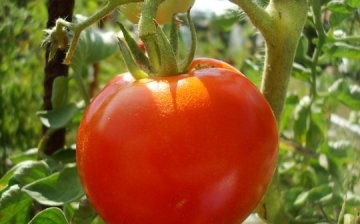


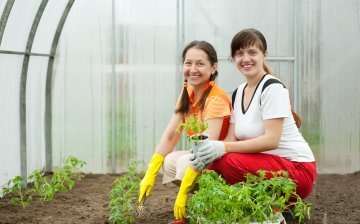
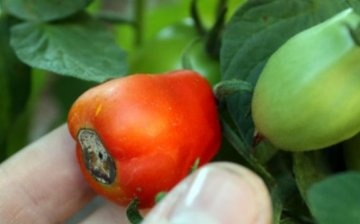








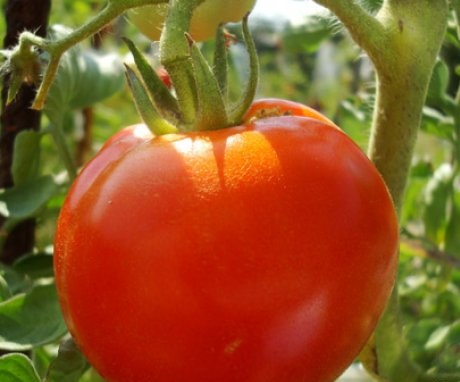
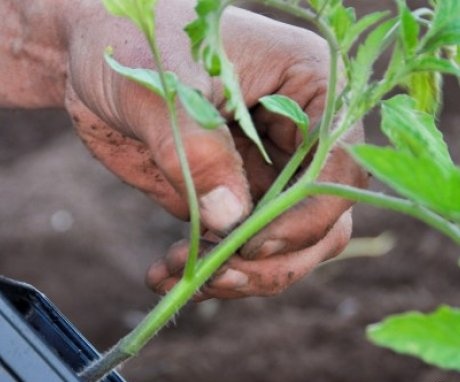
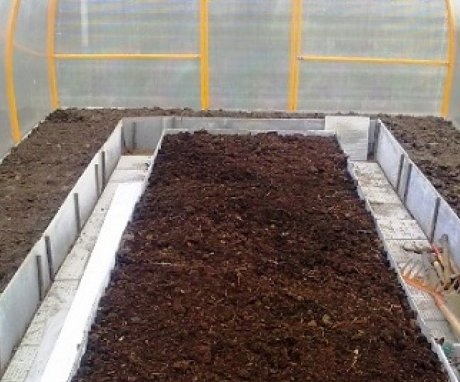
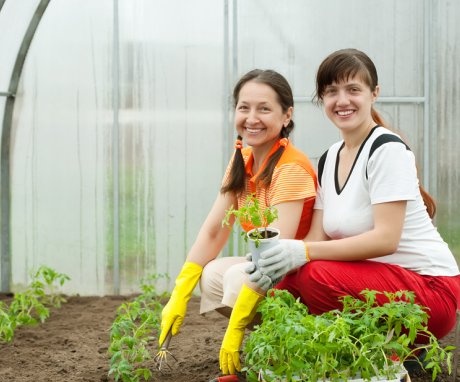
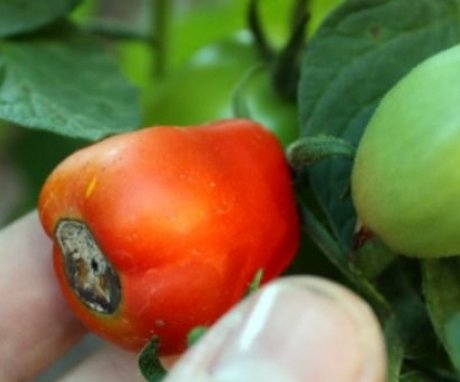
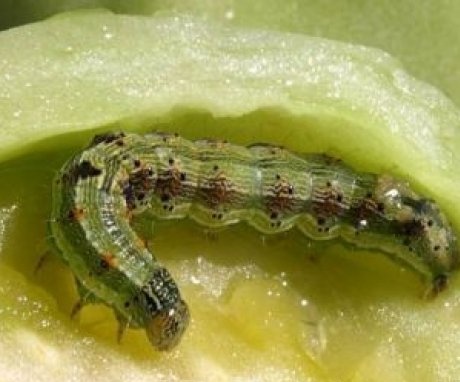
Of course, in comparison with growing tomatoes in the open field, in a greenhouse the growth and ripening time of fruits will be about a month longer, because at the end of April, beginning of May, as well as in mid-September, the nights are cool and there may be frosts. In the greenhouse, the tomatoes are protected from this.